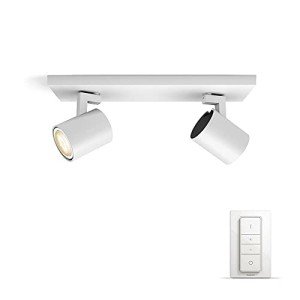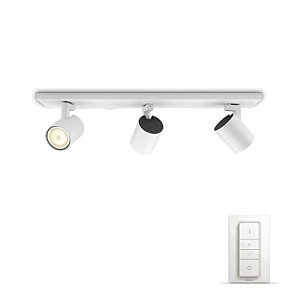
Buy Hallway Lighting UK
Add a review FollowOverview
-
Sectors Tourism & Travel
-
Posted Jobs 0
-
Viewed 15
Company Description
The 10 Most Terrifying Things About Interior Lighting UK
Interior Lighting in the UK: A Comprehensive Guide
Interior lighting plays a crucial role in developing an atmosphere, improving performance, and expressing individual design within homes and companies. In the UK, where the weather can be unforeseeable, effective lighting is not only about aesthetic appeals however also about making areas feel warm, inviting, and useful. This short article dives into different aspects of interior lighting, encompassing types, patterns, ideas, and often asked questions.
Understanding the Importance of Interior Lighting
Lighting is typically considered the backbone of interior decoration. It affects mood, functionality, and the viewed size of spaces. The ideal lighting can:

- Enhance the architectural functions of a room.
- Emphasize artwork and decoration.
- Enhance safety and security.
- Impact performance in work spaces.
- Create a comfortable atmosphere for relaxation.
Kinds Of Interior Lighting
Effective lighting style generally includes three primary types of lighting: ambient, task, and accent.
1. Ambient Lighting
This is the main source of light in a room, supplying total lighting. Typical sources consist of:
- Ceiling-mounted fixtures
- Chandeliers
- Recessed lighting
- Soft wall sconces
Ambient lighting produces a foundation from which other lighting types can construct upon.
2. Task Lighting
Task lighting concentrates on specific areas to assist in activities such as reading, cooking, or working. This kind of lighting assists to decrease eye pressure and can significantly impact performance. Common sources consist of:
- Desk lamps
- Under-cabinet lights in cooking areas
- Checking out lamps next to beds
- Track lighting aimed at work surfaces
3. Accent Lighting
Accent lighting adds drama and highlights specific things or areas, such as artwork or architectural functions. This kind of lighting can produce visual interest and depth in a space. Sources consist of:
- Picture lights
- Decorative lamps
- Uplighters
- LED strip lights along shelves
Making use of a combination of these lighting types can cause a well-balanced and multifunctional space.
Popular Lighting Trends in the UK
The interior lighting landscape in the UK continues to progress, influenced by design patterns, technology, and consumer choices. Here are some popular trends to enjoy:
-
Smart Lighting: The development of smart technology has actually changed how individuals manage lighting in their homes. Smart bulbs and systems like Philips Hue enable users to manage brightness and color temperature by means of their mobile phones.
-
Minimalist Designs: Sleek, basic styles that mix perfectly with interiors are dominating the market. Pendant lights with fragile frames, LED strips, and geometric shapes are especially fashionable.
-
Industrial Lighting: This trend showcases raw, disclosed products. Metal fixtures and Edison bulbs offer a vintage touch that is both elegant and functional.
-
Eco-Friendly Options: With increasing awareness of sustainability, many customers are turning to energy-efficient LED options and fixtures made from sustainable products.
Tips for Effective Interior Lighting Design
Creating an effective lighting strategy requires thoughtful consideration of different aspects. Here are some suggestions:
-
Consider the Purpose of Each Room: Every area has a different function. Consider what activities will happen and what type of lighting will support those activities.
-
Layer Lighting: Employ multiple kinds of lighting within a room to produce depth and flexibility. Integrate ambient, job, and accent lighting to improve both aesthetics and performance.
-
Usage Dimmers: Dimmers enable for control over brightness levels, making it possible for users to adjust lighting according to state of mind and time of day.
-
Include Natural Light: Make the many of natural lights like windows. Usage light, reflective colors for walls and home furnishings to take full advantage of brightness.
-
Believe About Color Temperature: Different color temperatures (determined in Kelvins) produce various atmospheres. Warmer temperature levels (around 2700K-3000K) are relaxing, while cooler temperature levels (4000K+) provide a more clinical or energetic feel.
Interior Lighting Mistakes to Avoid
To develop a well-lit space, it’s vital to avoid common lighting risks. Here are some errors to expect:
-
Underestimating Wattage: Insufficient wattage can lead to dim, unwelcoming spaces.
-
Neglecting Scale: Fixtures that are too little for a room can look out of location, while oversized fixtures can overwhelm an area.
-
Over-reliance on Ceiling Lights: Relying exclusively on overhead lighting can produce uninviting shadows; balance with extra lighting types.
-
Poor Placement: Misplaced lights can produce locations that are too brilliant or too dark. Strategy positionings thoughtfully.
Frequently asked question Section
1. What is the distinction between warm white and cool white light?
Warm white light (2700K to 3000K) develops a cozy, welcoming atmosphere, perfect for living rooms and bedrooms, while cool white light (4000K to 5000K) is more fit for work spaces as it boosts concentration and clearness.
2. How can I optimize natural light in my home?
To take full advantage of natural light, usage light-colored walls, strategically place mirrors to show light, and select sheer window coverings that allow sunlight to travel through.
3. How do I pick the best lighting fixture?
Consider the size of your area, the style of your design, and the function of the location. Make sure the scale of fixtures matches the room and matches the overall visual.
4. Are LED lights much better than traditional bulbs?
Yes, LED lights are more energy-efficient, have a longer life-span, and can offer a series of color temperature levels, making them a more sustainable lighting choice.
5. What should I do if particular areas of my room stay too dark?

Consider including additional job or accent lighting to lighten up those locations. Floor lamps, wall sconces, or perhaps strategically positioned table lamps can assist minimize dark spots.
Interior Lighting UK lighting is an essential element of home and company style across the UK. Comprehending the different types, current patterns, and best practices can help homeowner in producing spaces that are not only trendy but also practical. With thoughtful factor to consider and preparation, effective lighting can transform any environment, boosting both ambiance and use for several years to come.
